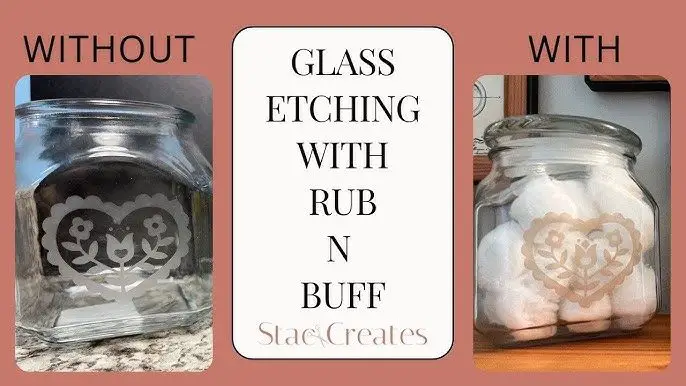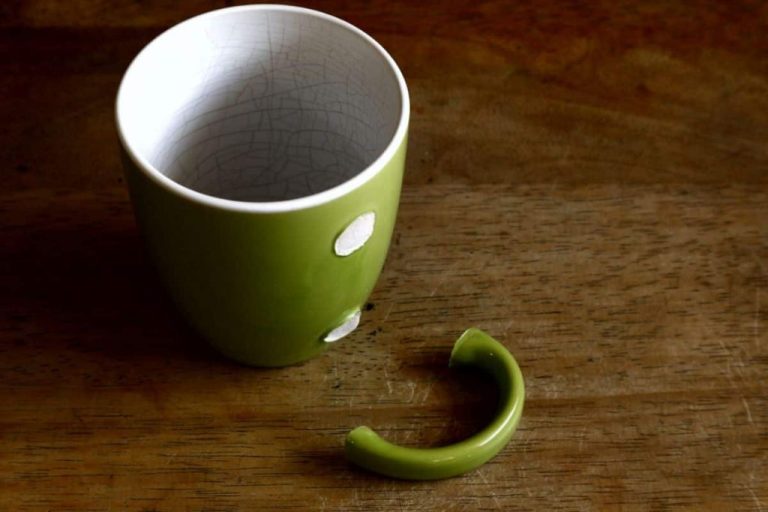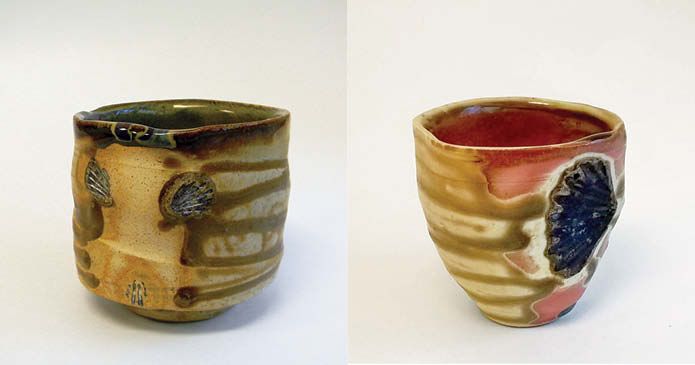How Long Does It Take For Rub And Buff To Cure?
What is Rub ‘N Buff?
Rub ‘n Buff is a waxy paste created by Amaco that can be used to add metallic, antique finishes to a variety of surfaces. It contains carnauba waxes, fine metal powders, and pigments that create a distressed, aged look when applied to objects.
According to Gathered in the Kitchen, “The beauty of Rub ‘n Buff is that it can be used on just about any surface – wood, metal, ceramic, glass, fabric, plastic, resin – you name it.”
Rub ‘n Buff is often used by crafters and artists to add an antiqued, metallic look to items. It can create effects like gilding, patina, verdigris, and more. The product comes in a variety of metallic colors like silver, gold, copper and bronze.
It is applied like paint or wax and then buffed out, leaving behind a durable finish. Rub ‘n Buff is ideal for distressing and antiquing everything from furniture to jewelry. It can make new items look aged and vintage.
Drying Time
Rub ‘N Buff dries by allowing the carrier oils in the paste to evaporate. There are a few key factors that affect the drying time:
- Surface material – According to Thrifty Decor Chick, Rub ‘N Buff dries faster on porous materials like wood compared to nonporous metals.
- Humidity – Higher humidity slows down the evaporation of the oils and extends drying time.
- Temperature – Warmer temperatures speed up evaporation resulting in faster drying.
- Thickness – Thicker layers take longer to dry than thin layers.
On average, Rub ‘N Buff dries in about 15-30 minutes depending on the factors above. It dries almost immediately according to Thrifty Decor Chick, allowing you to buff it out right away. You can test if it’s dry by touching the surface gently – if it feels tacky, it needs more time. When properly dried, the surface should feel smooth.
Curing Time
There is an important difference between drying and curing when it comes to Rub ‘N Buff. Drying refers to when the product feels dry to the touch on the surface. This happens quite quickly, usually within 30 minutes as the solvents evaporate (Source). However, curing refers to the process of the waxes and pigments fully hardening and bonding to the surface. This takes much longer than drying.

For a full cure, Rub ‘N Buff typically takes 24-48 hours before it is completely hardened and bonded (Source). The curing process allows the product to fully cross-link, forming a durable finish. Disturbing the surface too early can damage the curing Rub ‘N Buff. It’s best to allow a full 48 hours for curing if possible before cleaning or applying any top coat.
Humidity and Temperature
The ideal temperature for Rub ‘N Buff to cure is between 70-80°F. Temperatures below 50°F can significantly slow the curing process and may prevent the wax from fully hardening. Conversely, temperatures above 80°F can cause the wax to cure too rapidly, limiting the working time. Humidity also plays a role in curing time. According to the manufacturer, high humidity areas may need to allow Rub ‘N Buff to dry for up to 24 hours before buffing out the finish (Rub N’ Buff Q & A!, 2012).
Low humidity conditions allow Rub ‘N Buff to dry faster, while high humidity slows the evaporative drying process. Try to apply Rub ‘N Buff when the humidity is below 60% for optimal results. If the humidity is very high, the wax may remain tacky and resist hardening. Proper ventilation can help lower ambient humidity. Avoid applying Rub ‘N Buff in damp cool basements or on cold surfaces, as the wax needs sufficient warmth to set up.
Coats and Layers
Rub ‘N Buff is designed to be built up in layers for maximum coverage and color intensity. According to Our Fifth House, “The best thing to do if the first coat doesn’t cover the way you want it to is to let it dry for a few hours and then apply another coat.”
Most sources recommend allowing 1-2 hours of curing time between coats for the previous layer to set properly before adding another. Thrifty Decor Chick states that Rub ‘N Buff “dries almost immediately, so you can buff it out right away.” However, it’s best not to rush the curing process.
In terms of maximum layers, 2-3 coats is generally recommended for full coverage, depending on the color and surface material. Allow the final coat to cure for at least 24 hours before disturbing or applying any protective finish.
According to a forum discussion on The Dented Helmet, “The whole helmet (the silver parts only) took maybe 15-20 mins. The stuff really is amazing.” However, multiple thin coats with proper curing time is preferable to quick, thick applications for best durability.
Surface Material
The cure time for Rub ‘N Buff can vary significantly depending on the material and porosity of the surface it is applied to. Porous materials like wood, plaster, and unglazed ceramics have a much longer cure time compared to non-porous surfaces like metal, glass, and glazed ceramics.
According to The Dented Helmet forum, Rub ‘N Buff takes around 15-20 minutes to cure when applied to metal surfaces [1]. The product soaks into porous materials, so full curing can take over 24 hours as it dries throughout the material. Our Fifth House recommends letting Rub ‘N Buff dry for at least a few hours before buffing when applied to wood [2].
In summary, porous surfaces allow Rub ‘N Buff to penetrate deeper resulting in longer cure times, while smooth non-porous materials like metal and glass have shorter cure times of around 15-20 minutes. Check the specific surface material and follow the manufacturer’s recommendations for ideal curing before disturbing or buffing.
Curing Process
The curing process involves a chemical reaction as the wax and fragrance oil molecules bind together over time. This process allows the fragrance oil to fully incorporate into the wax blend and evenly disperse throughout the candle. According to research, “Candle curing is the process of continuous hardening of wax to disperse fragrance oils evenly throughout the blend.” (https://armatagecandlecompany.com/blog/candle-curing/)
Curing takes time because the wax and fragrance oil need sufficient time for the chemical bonds to fully form. The curing process allows for even fragrance distribution and helps prevent fragrance throw issues like tunneling. Rushing the cure can lead to cosmetic and performance problems. As explained by experts, “Different wax and fragrance oil combinations require different cure times to reach their full scent potential.” ( https://www.thesprucecrafts.com/cure-in-candle-making-516748)
Improving Cure Time
There are a few techniques candle makers use to speed up the drying and curing process for candles:
Applying gentle heat from a heat gun or blow dryer can help evaporate leftover solvents and moisture more quickly, expediting the curing process. However, too much heat can cause defects, so caution is advised (https://bubbleslidess.com/how-to-speed-up-candle-curing-time/).
Letting candles cure with the lids off allows moisture and fragrance to escape freely. However, some makers prefer curing with lids on to allow the wax pool to reabsorb any emitted fragrance (https://www.reddit.com/r/candlemaking/comments/9azyua/ill_say_it_cure_times_do_not_matter_one_bit/).
To test if a candle is cured, candle makers suggest burning it for a short time and noting if the wax pool has a smooth, stable melt with no wet spots. Testing the fragrance throw at varying distances from the candle can also help determine if it has fully cured.
In general, most makers agree 1-2 weeks of curing is sufficient for most candle types. Going much longer may not provide noticeable benefits.
Hazards of Early Disturbance
When working with Rub ‘N Buff, it’s important to allow the product to fully cure before handling to avoid smudges or fingerprints. If Rub ‘N Buff is disturbed before it has completely cured, there are some risks and remedies to be aware of:
Handling or touching Rub ‘N Buff too soon can cause smudging, smearing, and fingerprints since the wax, oil, and pigment mixture is still soft. According to experts, Rub ‘N Buff takes around 24-48 hours to fully cure depending on temperature, humidity, and thickness of application [1]. Rushing the curing process often leads to frustrating touch-ups and rework.
If smudges or fingerprints happen, there are a few ways to remedy them. Using a cotton swab dipped in mineral spirits can help gently lift Rub ‘N Buff from unintended areas without damaging the finish underneath [2]. You can also try gently rubbing with a microfiber cloth to buff out any disturbed areas. Sometimes light sanding and reapplication of Rub ‘N Buff is needed for problem spots that don’t buff out.
With patience and allowing proper cure time, Rub ‘N Buff can be handled and enjoyed without issue. But disturbing it too soon can lead to imperfections, so it’s best to wait 24-48 hours before handling finished pieces.
Summary
Overall, Rub ‘N Buff takes around 24-48 hours to fully cure when applied properly. The curing process allows the waxes and oils in Rub ‘N Buff to harden and become scratch resistant. Having patience and allowing Rub ‘N Buff to cure completely ensures you get the full protective benefits. Disturbing the curing Rub ‘N Buff by touching, brushing against, or applying other products too soon can smear, smudge, and ruin the finish. While it may dry to the touch faster, curing fully takes more time. Applying thin, even layers allows Rub ‘N Buff to cure smoothly. Rushing the curing process could mean having to reapply and start over. So take your time, follow the directions, and let the Rub ‘N Buff cure properly for best results.




